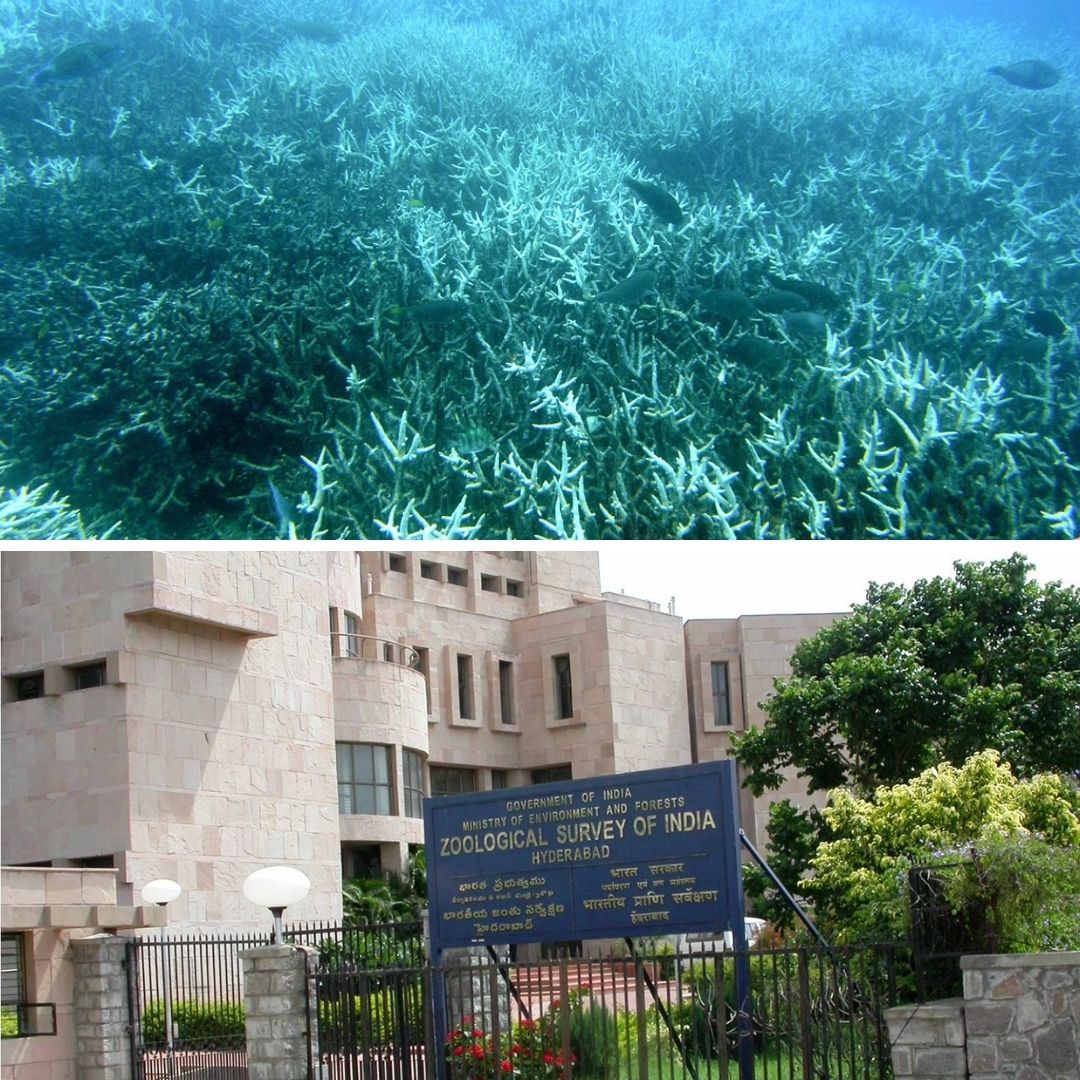
Image Credit : Wikimedia/Zoological Survey of India
Climate Change Causes Massive Coral Bleaching In Andaman, Warns Zoological Survey Of India
Writer: Himanshi Gupta
She is a passionate writer and researcher. Her main interest lies in world politics and crime.
Andaman and Nicobar Islands, 26 May 2022 5:19 AM GMT
Editor : Ankita Singh |
A literature lover who likes delving deeper into a wide range of societal issues and expresses her opinions about the same. Keeps looking for best-read recommendations while enjoying her coffee and tea.
Creatives : Himanshi Gupta
She is a passionate writer and researcher. Her main interest lies in world politics and crime.
Scientists at the Zoological Survey of India recently revealed massive coral bleaching in the Andaman Sea coastal areas. The findings recorded coral bleaching up to 83.6%, marking a maximum of 91.5% for the South Andaman region.
Scientists at the Zoological Survey of India recently revealed massive coral bleaching in the Andaman Sea coastal areas. The findings recorded coral bleaching up to 83.6%, marking a maximum of 91.5% for the South Andaman region.
Climate change has cost humanity a hefty price. With studies warning of reduced sleep patterns, and extreme heatwaves in India, climate change has accorded yet another damage.
The coral reef is an underwater ecosystem that comprises colonies of corals that are extremely important for a healthy marine ecology. It is one of the rarest and the most exquisite ecosystems on Earth and is a source of food and shelter for at least 25% of marine species.
They are also a source of new medicines and livelihood for locals and further protect the coastline from storms and erosions.
Findings Of The Study
Dr Dhriti Banerjee, Director of Zoological Survey of India, blamed EL Nino events and increased surface temperature in 2016 for coral bleaching. The detailed studies during pre and post bleaching studies suggest that a total of 23.58% of the live cover was lost due to massive bleaching in Andamans.
El Nino is a climatic condition that refers to the warming of the ocean surface or above-average sea surface temperatures in the Central and Eastern Tropical Pacific Ocean. It affects the ocean temperatures, speed, strength of ocean currents, and health of coastal fisheries.
Studies show that the destructive impacts of El Nino have resulted in bleaching events worldwide. In 2016, the Great Barrier Reef reported 22% of the dead corals.
The International Union of Conservation of Nature reported that coral reefs in the Western Indian ocean might come to an end within the next 50 years. Following the same trail, scientists from the University of Hawaii Manoa also warned that around 70-90% of the world's existing coral reefs are predicted to disappear within the next 20 years.
Studies further informed that the Bay of Bengal coast of North and Middle Andaman did not record any bleaching. But the Bay of Bengal coastal areas of the South Andaman did record 74.2% of the bleached corals.
The studies also recorded that the coral bleaching had a maximum depth of 30m.
How Does Climate Change Lead To Coral Bleaching?
Coral bleaching happens when corals lose their vibrant colours and turn white. Corals are bright in colour because of the microscopic algae called zooxanthellae. Each help the other survive.
The warming of the oceans due to climate change causes the coral to drive out the algae. It may bleach through other reasons like extremely low tides, too much exposure to sunlight or even pollution.
Also Read: High Cost Of Climate Change: Droughts Reduced India's GDP By 2 To 5%, Says UN Report
 All section
All section














